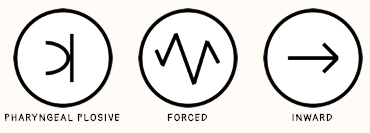TyTe busts the myths surrounding what most beatboxers call Inward K snares. Are you ready for the truth?
Welcome to my first BZZKTT blog post!
I’ve been soooo busy developing the web app that I’ve hardly had time to sit down, stand back, and say, “Ooh. Nice!” Anyway… the topic of this first post is to tackle one of my bug-bears, the Inward K Snare.
When someone says to me that they make an Inward K Snare, I immediately roll my eyes and start to twitch. For starters, which one? There are about 50 different sounds that come under this blanket title! Yes, I know… I’m a pedant (some may use more derogatory words) but hey, I’m a mad beatbox scientist and this is what I do. Get over it.
It’ll be true that the beatboxer is making an Inward sound… and yes, it might sound like a ‘K’ but it is it really an Inward K Snare? Let’s find out.
Before we get onto the different methods, you need to know about plosives.
Plosives are sounds made by stopping and suddenly releasing air between two parts of the mouth anatomy. Think of them as ‘explosive’ sounds.
English letters such as b, p, d, t, and k are all made using plosives.
In Beatboxing we often force plosive sounds.
When we force a plosive we use lots of air pressure and create a short oscillation or vibration. This makes the sound louder and punchier.
This is the symbol we use to show a sound is forced:

The sounds we’re going to look at are all forced sounds.
You can make an inward ‘snare’ sound using the tongue and just about any part of the mouth anatomy. However, there are four basic methods used by beatboxers!
Here they are…

You can make an Inward sound between the tongue and the hard palate. This is the hard part of the roof of your mouth that extends down to above your upper rear teeth. You can use any part of your tongue and any part part of the hard palate to make this sound.
It sounds like this…

Sounds made between the tongue and the hard palate are called palatal sounds. Ha! I’m making you learn stuff.
Because palatal plosives sound more like clicks, we generally call them… er… clicks!

You can make an Inward sound between the top rear of the tongue and the soft palate. This is the soft part of the roof of your mouth.
It sounds like this…

Sounds made between the tongue and the soft palate are called velar sounds. Don’t ask me why. They just are.
As this is where, in English, we articulate the letter ‘K’ this is actually a true Inward K Sound. But… because it sounds more like a rimshot (where a stick hits the side of the snare drum) we generally call these rimshots!

You can make an Inward sound between the tongue and the cheek. Usually, when you do this you keep the tip of the tongue pressed against the Alveolar Ridge and make the plosive between the side of your tongue and your cheek.
It sounds like this…

Sounds made between the tongue and cheek are called buccal sounds. Why? Because it is quicker to say than “tongue-to-cheek sounds” and besides, it makes you sound like you know what you are talking about when you mention it at the dinner table.
This a snare used by just about every beatboxer and is what most people call an Inward K Snare. BUT… because it is not articulated where a ‘K’ is usually made, and because it sounds a bit more like a handclap, we call it a handclap! Genius!

You can make an Inward Sound between the rear of your tongue and your throat.
It sounds like this…

Sounds made between the tongue and the throat are called pharyngeal sounds. Pharynx is a posh word for throat and we are well posh!
I remember meeting the beatboxer Alien Dee back in 2003 and he showed me how to make this sound. At the time, my mind was blown!
Yes, it is possible to make Inward sounds with the tongue against the lips, teeth, alveolar ridge, and even the uvular! You can also make all these sounds breathing in (aspirated) and add other things like vocals too!
The sounds used in this lesson were the Fuzzbox Click, 606 clap, Inward Classic Rimshot, and the SKA Rimshot.
You explored Plosives and encountered the Forced and Inward effectors (oh and an Alveolar Stop too).
BZZKTT Version 8.2 • © 2015-2020 Gavin ‘Beatbox’ Tyte (aka TyTe) • All Rights Reserved
BZZKTT is kindly hosted by Alex Tearse from Reefnet.
Special thanks to Alex Tearse, Paul Arnett, Michael Wyatt, Tyler Thompson, Helen Tyte, David ‘Goznet’ Gosnell, and Jerusalem Productions.